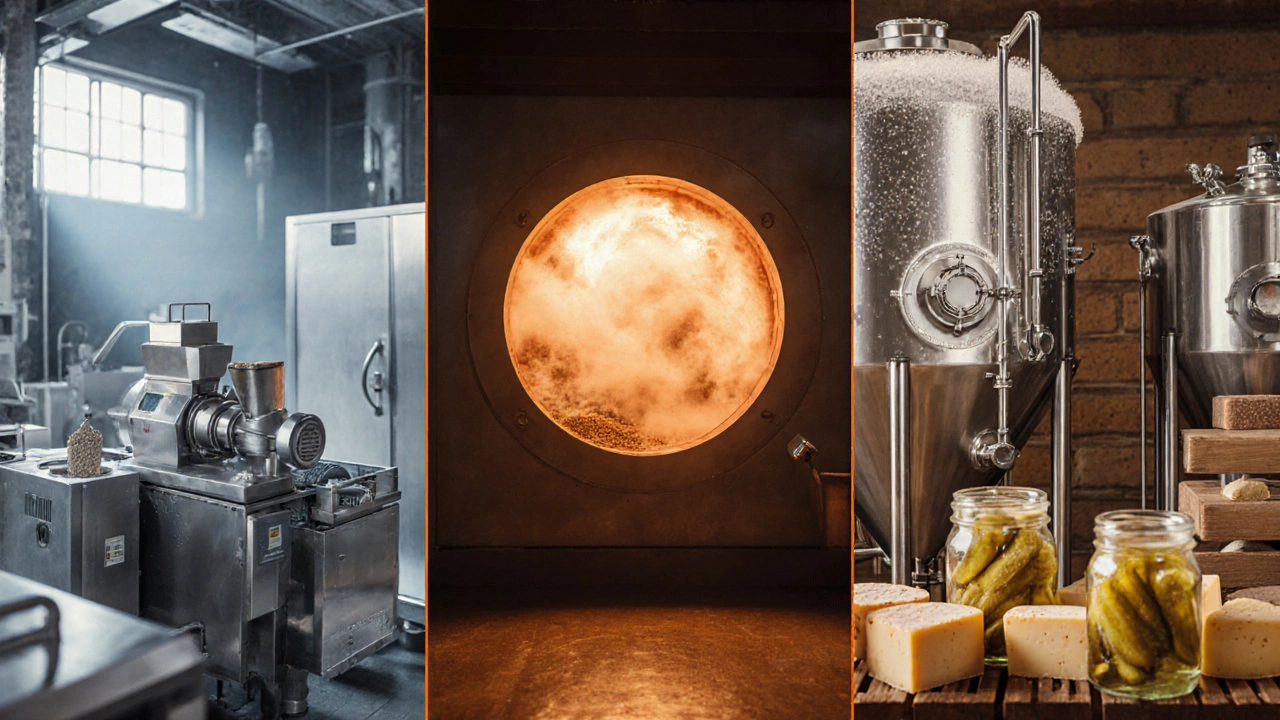Thermal Processing: Methods, Applications, and Industry Trends
When working with Thermal Processing, the controlled application of heat to alter material properties such as strength, flexibility, or chemical composition. Also known as heat treatment, it powers many manufacturing steps across sectors. In simple terms, you heat, hold, then cool a material to get the result you need.
In the Plastics Manufacturing, processes like extrusion, injection molding, and film blowing rely heavily on precise thermal processing, temperature ramps dictate product strength, surface finish, and dimensional stability. When a plant masters heat control, cycle times shrink, scrap drops, and energy bills fall, giving a clear competitive edge.
Similarly, Chemical Production, large‑scale reactors use thermal processing to drive reactions, separate components, and purify end‑products benefits from accurate heating profiles. A few degrees off the target can lower yield, increase by‑products, or even trigger safety alarms, so operators treat temperature as a critical process variable.
Food Processing, techniques such as pasteurization, baking, drying, and sterilization are all forms of thermal processing that ensure safety, texture, and shelf life. Here, temperature curves are monitored like a chef watches a pot—steady heat kills microbes, while too much heat ruins flavor.
The Textile Industry, uses thermal processing in dye fixation, fabric curing, and synthetic fiber creation to lock colors, set dimensions, and achieve tensile strength. Uniform heat across yards of fabric is essential; any hot spot can cause uneven dye or weak spots in the final garment.
Key Benefits of Effective Thermal Processing
Across these sectors, thermal processing enables three core benefits: faster production, higher product consistency, and lower waste. When temperature is predictable, machines run longer without interruption, and quality control teams spend less time chasing defects. Moreover, precise heat application reduces energy consumption, helping plants meet sustainability targets while cutting costs.
Modern plants rely on advanced sensors, insulated heating zones, and real‑time control software to achieve that precision. Devices like infrared pyrometers, thermocouples, and PID controllers form the hardware backbone, while SCADA dashboards give engineers the visibility to adjust set points on the fly. Mastering these tools is what separates a good operation from a great one.
Challenges do exist—thermal inertia in large batches, uneven heat distribution in complex geometries, and the cost of retrofitting old equipment. Best practices include mapping heat flow with simulation, scheduling regular calibration of temperature devices, and designing processes that tolerate small variations instead of insisting on impossible perfection.
All of this shows why Thermal Processing matters to anyone involved in manufacturing, whether you produce polymer films, synthesize specialty chemicals, bake snack foods, or finish fabrics. Below you’ll find a curated set of articles that dive deeper into each industry, share real‑world case studies, and suggest actionable steps you can take today to boost your heat‑related operations.

Three Main Types of Food Processing Explained
Explore the three major food processing types-mechanical, thermal, and chemical-plus examples, benefits, and how to choose the right method for any product.
